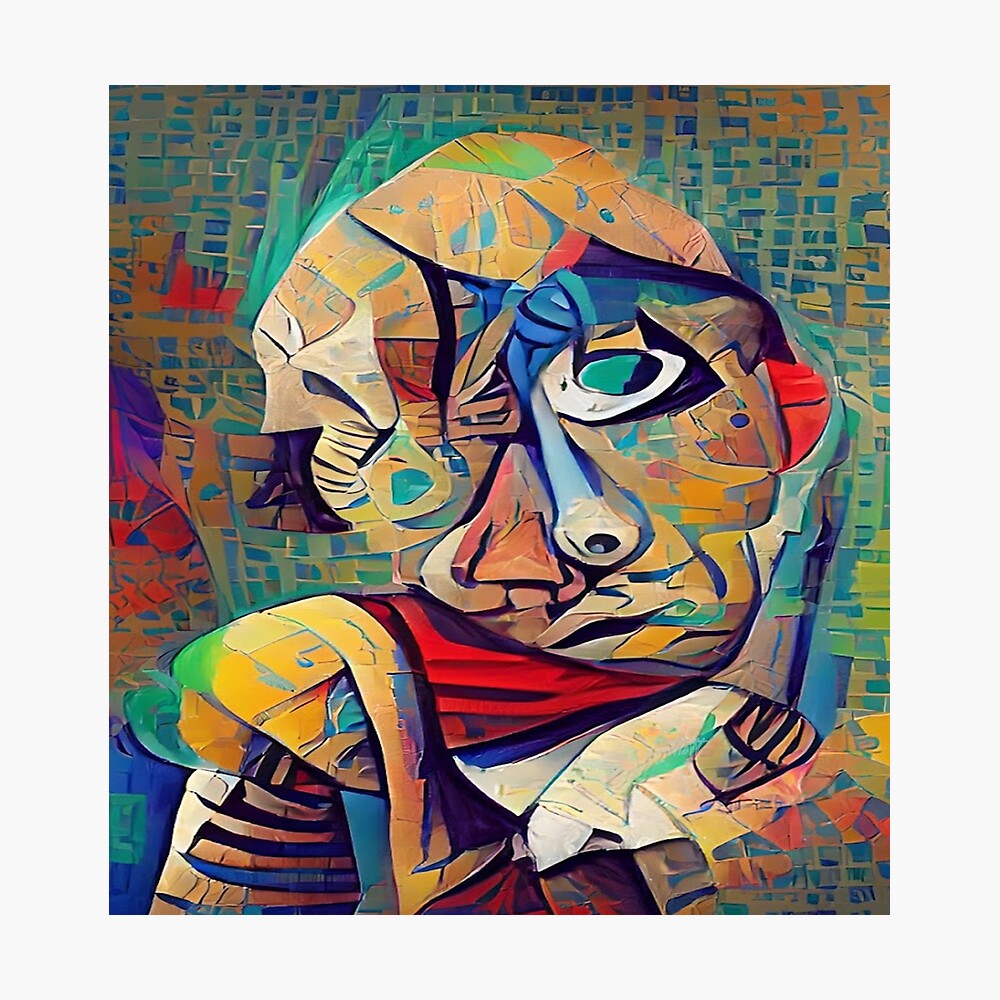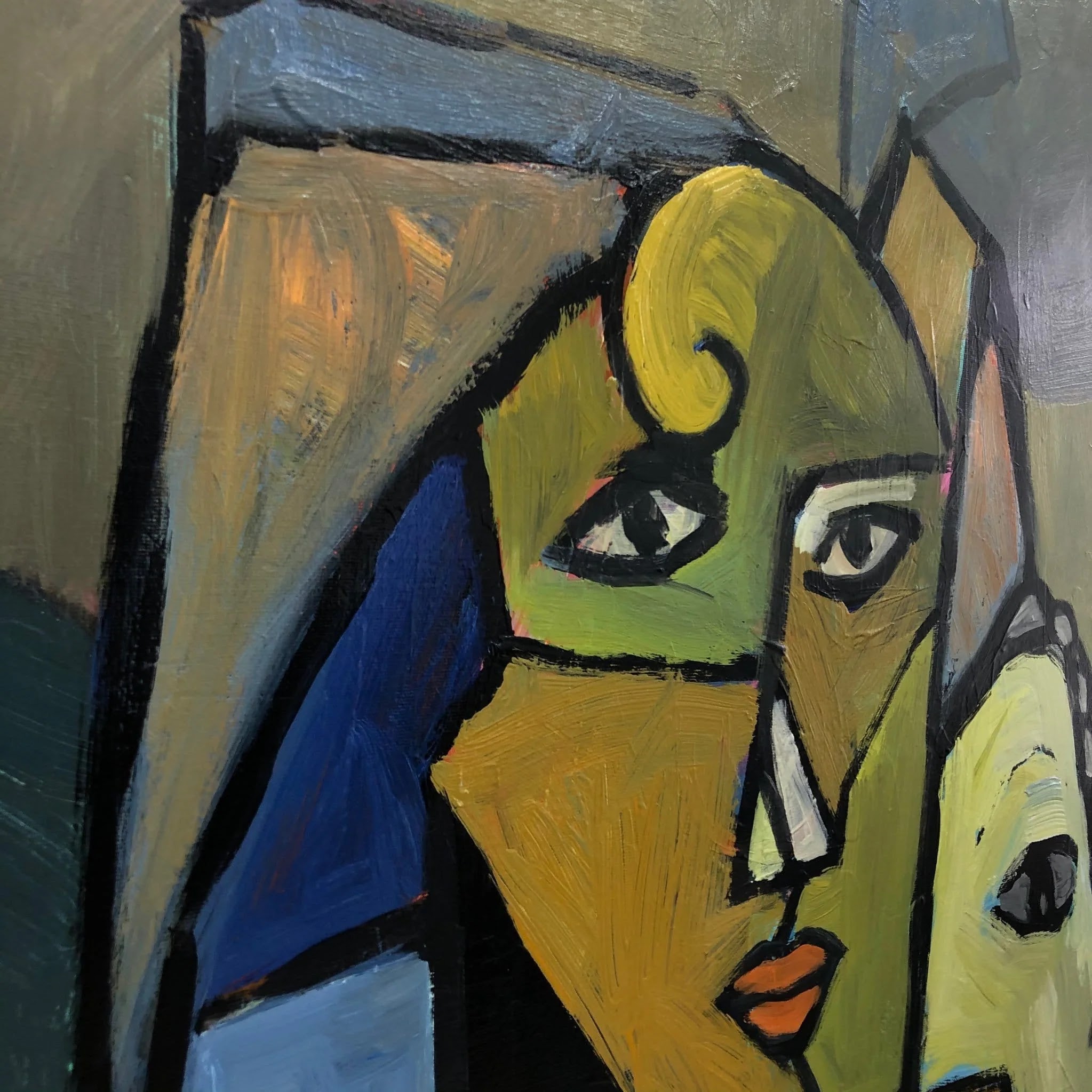Introduction
Face cubism, an intriguing branch of the broader cubism art movement, offers a unique perspective on portraiture. Characterized by fragmented forms, geometric shapes, and a multidimensional approach to representing the human face, face cubism challenges traditional notions of representation. In this article, we will delve into the fascinating world of face cubism, exploring its origins, key characteristics, and providing guidance on how to create your own cubist portraits.
What is the concept of cubism
Cubism, an influential art movement that emerged in the early 20th century, revolutionized the way artists approached representation. Developed by Pablo Picasso and Georges Braque, cubism sought to depict subjects from multiple viewpoints simultaneously, breaking them down into geometric shapes and fragmented forms. The key concepts of cubism include:
1. Multiple Perspectives: Cubism challenged the idea of representing subjects from a single viewpoint. Instead, artists explored various perspectives and angles, presenting multiple facets of the subject simultaneously.
2. Fragmentation and Abstraction: Cubist artworks often featured fragmented forms and abstracted shapes, deconstructing the subject into geometric elements.
3. Analytical and Synthetic Cubism: Cubism evolved into two main phases. Analytical cubism focused on breaking down the subject into smaller facets and exploring its structure, while synthetic cubism introduced collage elements and incorporated everyday objects into artworks.
Key Characteristics of Face Cubism
1. Fragmented Forms: Face cubism involves breaking down the features of the face into geometric shapes, such as cubes, triangles, and rectangles. This fragmentation creates a sense of depth and multidimensionality in the artwork.
2. Abstracted Features: Rather than striving for realistic representation, face cubism emphasizes the expressive potential of abstracted facial features. The eyes, nose, and mouth are often depicted as simplified shapes, capturing the essence of the subject rather than the minutiae of detail.
3. Multiple Perspectives: Face cubism embraces the concept of representing multiple viewpoints simultaneously. Different angles and perspectives of the face can be depicted in a single composition, offering a multifaceted interpretation of the subject.
Three types of cubism
Lets explore the three types of cubism—Analytical Cubism, Synthetic Cubism, and Orphic Cubism—and shed light on their defining features.
Analytical Cubism
Analytical Cubism marked the early phase of the movement, characterized by its meticulous deconstruction and exploration of multiple perspectives. During this period, artists aimed to analyze and understand the essence of the subject matter by breaking it down into basic geometric forms. Key features of Analytical Cubism include:
a. Multiple Viewpoints: Artists depicted the subject from various angles and viewpoints simultaneously, challenging the traditional single-point perspective. This technique aimed to capture the complexities of perception and encourage the viewer to engage with the artwork actively.
b. Monochromatic Palette: Analytical Cubism often employed a limited color palette, emphasizing the exploration of form, texture, and space rather than relying on vivid hues. Earthy tones, grays, and muted colors were commonly used, allowing the emphasis to shift to the geometric structures of the artwork.
c. Intricate Detailing: Artists paid close attention to intricate detailing, incorporating fine lines, overlapping planes, and fragmented forms. This meticulous approach aimed to depict objects and subjects in a complex and layered manner, showcasing their essence from different viewpoints.
Synthetic Cubism
Following Analytical Cubism, Synthetic Cubism emerged as a later phase, introducing new techniques and elements to the movement. Synthetic Cubism embraced a more playful and experimental approach, incorporating collage and diverse materials into the artworks. Key features of Synthetic Cubism include:
a. Collage Elements: Artists incorporated various materials, such as newspaper clippings, fabric, and found objects, into their compositions. By integrating these diverse elements, they aimed to blur the boundaries between art and everyday life, challenging the traditional notions of artistic representation.
b. Simpler Forms: Synthetic Cubism moved away from the intricate detailing of Analytical Cubism and embraced simpler and more recognizable forms. Artists used bold, flat colors and simplified shapes to create vibrant and dynamic compositions.
c. Everyday Subjects: Unlike the focus on traditional still life and portraiture in Analytical Cubism, Synthetic Cubism often depicted everyday objects and subjects from the modern world. This shift reflected the changing cultural landscape and the artists’ desire to incorporate the realities of contemporary life into their work.
Orphic Cubism
Orphic Cubism, influenced by the works of Robert Delaunay, introduced vibrant colors, abstract elements, and a focus on emotional expression. It emphasized the spiritual and emotional aspects of art, evoking sensations and impressions through color and form. Key features of Orphic Cubism include:
a. Vibrant Colors: Orphic Cubism utilized bold and vibrant colors, often in contrasting combinations. These vibrant hues aimed to evoke emotions and create a sense of dynamism and energy within the artwork.
b. Abstract Shapes: Artists explored abstract shapes, such as circles, spirals, and curves, to represent the rhythms and harmonies of the natural world. This departure from strictly representational forms added a mystical and spiritual dimension to the compositions.
c. Sensory Experience: Orphic Cubism aimed to transcend the visual realm and engage the viewer’s senses on a deeper level. Through the interplay of color, form, and rhythm, artists sought to create a synesthetic experience, where one could hear and feel the artwork beyond its visual representation.
How to do cubism on face and Creating Your Own Cubist Portraits
How to turn a picture into cubism can be a tricky task for those who are new to it, but you can start with an easy cubism art drawing by following these steps:
1. Gather Inspiration: Familiarize yourself with the works of prominent cubist artists, such as Picasso and Braque. Study their use of geometric shapes, fragmented forms, and the overall composition of their cubist portraits. This will surely help you in understanding how to draw cubism portrait
2. Select a Subject: Choose a face or portrait that you wish to transform into a cubist artwork. It could be a photograph or a live model. This will help in knowing how to turn a picture into cubism,
3. Analyze the Face: Observe the features of the face and identify the main shapes and forms that define them. Break down the face into geometric elements such as cubes, triangles, and rectangles.
4. Simplify and Abstract: Simplify the facial features by representing them as abstracted shapes. Focus on capturing the essence and character of the subject rather than replicating exact details.
5. Multiple Perspectives: Incorporate multiple viewpoints and angles of the face within the composition. Experiment with overlapping shapes and varying perspectives to create a sense of dynamism.
6. Play with Color and Texture: Explore the use of color and texture to add depth and visual interest to your cubist portrait. Experiment with different palettes and techniques to achieve your desired effect.
7. Embrace Collage Elements: Like synthetic cubism, consider incorporating collage elements into your artwork. These can be textures, patterns, or even found objects that enhance the cubist aesthetic.
8. Experiment and Express: Remember that face cubism is an opportunity for artistic expression and experimentation. Embrace the freedom to interpret and reinterpret the subject in a unique and personal way.
Here are some abstract cubist portrait ideas and cubism drawing ideas







Conclusion
Face cubism offers an exciting and innovative approach to portraiture, allowing artists to explore the human face from multiple viewpoints and through the lens of abstraction. By embracing geometric shapes, fragmented forms, and abstracted features, face cubism pushes the boundaries of traditional representation, creating visually captivating and expressive artworks. Whether you are a beginner or an experienced artist, face cubism invites you to delve into the world of multidimensional portraiture, encouraging creativity and personal interpretation. So, grab your canvas, paints, and brushes, and embark on a journey of creating your own cubist masterpieces.







